Flying Squirrel vs Sugar Glider: Guide to the Differences
Flying squirrels and sugar gliders appear to be similar because they are small, nocturnal animals with large eyes and bushy tails, but they are very different. Both flying squirrels and sugar gliders are known for their spectacular treetop antics, but there are several critical differences between them. Let’s learn more about the behavioral and habitat differences between the flying squirrel vs sugar glider.
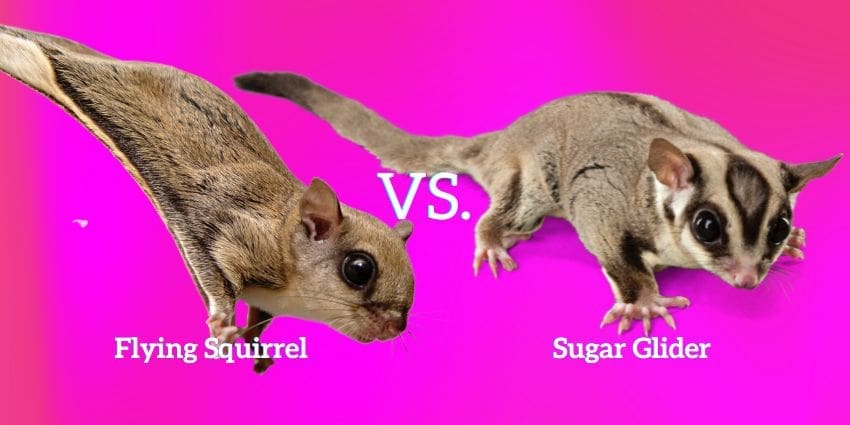
What is the Difference Between a Flying Squirrel vs Sugar Glider?
- Sugar Gliders are small marsupials from Australia/Indonesia, with less fluffy tails.
- Flying Squirrels are larger rodents from North America/Asia, with bushier tails.
- Size difference: Flying Squirrels can weigh up to 5 pounds; Sugar Gliders are around 4–5 ounces.
What is a Flying Squirrel?
Flying squirrels are rodents grouped with chipmunks, marmots, prairie dogs, flying squirrels, ground squirrels, and tree squirrels.
They are native to North America and Central America, while the Siberian flying squirrel is native to northern Europe. They live an average of 2-3 years in the wild and up to 5 years in captivity.
A gliding squirrel may be a better name for this tree-scaling animal because of its impressive gliding skills. The flying squirrel doesn’t fly like a bird despite its name.
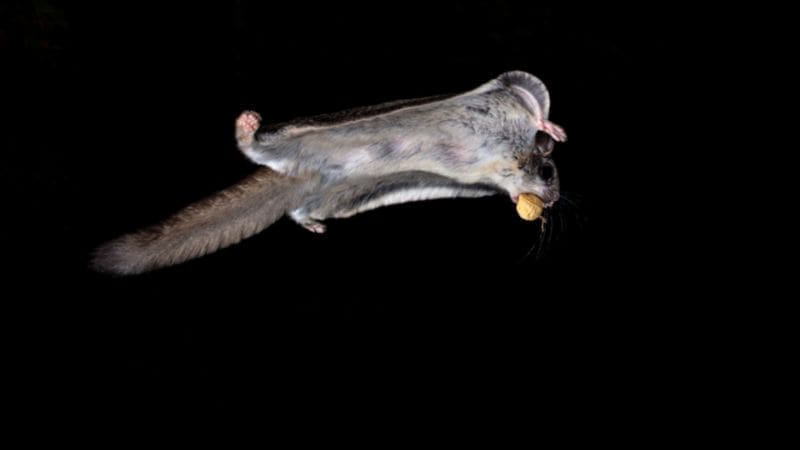
What is a Sugar Glider?
A sugar glider, sometimes called a sugar squirrel, is a small marsupial. They are closely related to the koala bear and the kangaroo.
Are Sugar Gliders Native to North America?
The glider, considered an exotic pet, is native to Australia, New Guinea, and Indonesia and was introduced to Tasmania in the early 1800s.
Sugar gliders require specialized diets, habitats, and health care. Gliders are messy, and most don’t succeed well with litter box training, and they also get a lot of pleasure from throwing their food.
Is a Sugar Glider a Squirrel?
No, a sugar glider is not a squirrel. A sugar glider is a small marsupial related to the koala bear and the kangaroo. Squirrels are in the rodent family.
Is a Sugar Glider a Rodent?
No, sugar gliders are not rodents. They are marsupials, meaning they carry their young in a pouch like a kangaroo.
Sugar Glider Unique Characteristics
One of gliders’ most extraordinary, unknown characteristics is how intensely, quickly, and long-lasting their connection is with their human families.
Interestingly, their intelligence level is like a dog, recognizing their name and learning tricks. Gliders can quickly get along with other household pets.
Do Sugar Gliders Need to be in Pairs?
There are several reasons why adopting sugar gliders in pairs is best.
Sugar gliders are social animals that enjoy being around others. Having a companion with them will help reduce their stress and anxiety levels.
Adopting two sugar gliders simultaneously may help them become bonded and form a close relationship. Sugar gliders are known to create strong connections with their owners, and adopting two at once will ensure they always have a pal nearby. Adopting as a pair can help improve their health and well-being.
Sugar Glider Alley
Sugar glider alley is a long, narrow path in the sugar glider habitat. Sugar gliders move between two trees or other objects by taking a path referred to as sugar glider alley. This path is also known as the sugar gliders’ route when moving from one tree to another.
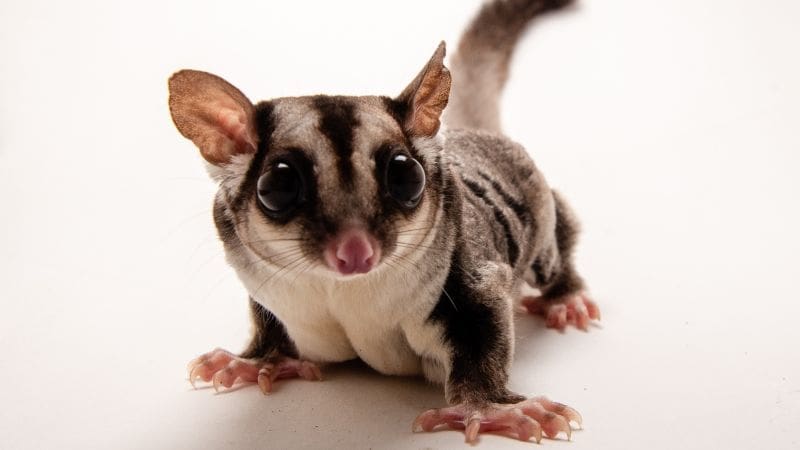
Flying Squirrel vs Sugar Glider: The Similarities
The sugar glider vs flying squirrel has similar features like eyes, patagium membrane, sleeping patterns, and caring for their offspring.
Are Sugar Gliders and Flying Squirrels the Same – Eyes
They both have enormous eyes, which help them see and forage for food at night.
Are Sugar Gliders and Flying Squirrels the Same – Patagium Membrane
Both animals have a patagium membrane, a skin flap stretching from the front to the back legs. When the glider’s arms are outstretched, the membrane catches air as they fall, which provides stability and steering when gliding from tree to tree. Gliding benefits the flying squirrel and glider to evade predators and reach food.
Are Sugar Gliders and Flying Squirrels the Same – Sleeping Pattern
Both animals sleep during the day (nocturnal) and are more active at night. A light sleeper may not appreciate either as a pet because of their nighttime shenanigans.
Are Sugar Gliders and Flying Squirrels the Same – Males Caring for their Offspring
The male flying squirrel and the male sugar glider take no part in raising their offspring.
Metabolic Bone Disease
Flying squirrels and gliders are susceptible to metabolic bone disease. This condition occurs when calcium is deficient in the diet. The disease causes death in both animals if not corrected through supplements or diet.

What’s the Difference Between a Flying Squirrel and a Sugar Glider?
The flying squirrel differs from the sugar glider in several ways. Those differences include raising their young, companionship requirements, gliding distance, behavior, vocalizations, lifespan, body heat, scent glands, and native origins.
The female flying squirrel is a placental mammal, which means the placenta nourishes the babies and develops in the uterus before birth. The sugar glider, a marsupial mammal, spends only a short time developing inside the mother’s body. After birth, the baby crawls into the mother’s pouch, feeds on the mother’s milk, and grows and develops.
Difference Between a Flying Squirrel and a Sugar Glider – Companions
A flying squirrel can live alone but also appreciates life with a companion. Gliders differ from flying squirrels because they must have another glider companion. Gliders who are left alone are prone to depression and may become combative.
When gliders are stressed, depressed, confused, have pain, lose their appetite, or don’t have a companion or lose their companion, they often over-groom, self-mutilate their tail, or die.
Humans can’t give the same companionship and friendship that another glider can offer. Gliders groom, bond, and exchange vocalizations with other gliders that any human can’t match.
Difference Between a Flying Squirrel and a Sugar Glider – Gliding Distance
A sugar glider can soar from 30 to 165 feet. Even more impressive is that flying squirrels glide anywhere from 150 to 500 feet! These two “flying animals” will undeniably amaze you with their ability in the sky!
Difference Between Flying Squirrel and Sugar Glider – Behavior
Sugar Gliders are more nervous and have personality fluctuations, whereas flying squirrels are more relaxed and confident. Sugar gliders are very prone to stress if awakened and taken out of their cages during daytime hours.
Difference Between Flying Squirrel and Sugar Glider – Vocalizations
Sugar Gliders vocalize when scared, irritated, or concerned by repeatedly making a screeching sound called crabbing. Also, they continually bark when seeking other gliders.
Flying squirrels are much less vocal and communicate by chirping.
Sugar Glider Lifespan
In captivity, sugar gliders can live for up to 15 years, though the average lifespan is more like 10-12 years.
Flying Squirrel Lifespan
The flying squirrel lifespan ranges from 2 to 10 years in the wild and up to 20 years in captivity.
Difference Between Flying Squirrel and Sugar Glider – Body Heat
Sugar Gliders are sensitive to cold temperatures and can die if subjected to cold temperatures. Gliders, native to warm, humid, and tropical environments, require a heat lamp in their habitat to maintain a temperature between 68-72 °F (20-22 °C).
Scent Glands
Sugar Gliders have scent glands that are absent in flying squirrels.
Male sugar gliders have a scent gland on the top of their head, right in the middle. The gland causes a bald spot in the center of the wide part of the black stripe. Males also have a gland in the center of the chest. Both males and females have an anal scent gland, whereas females have a scent gland in their pouches.
Native Origins of flying squirrel VS sugar glider
Sugar gliders originated in Australia and Indonesia, while flying squirrels are native to North America.
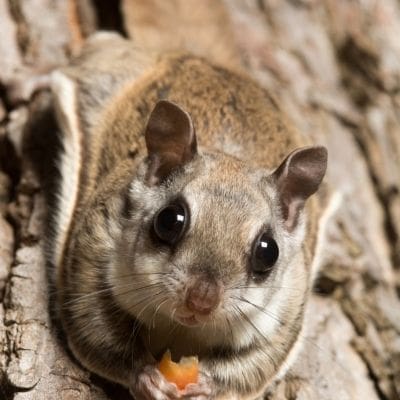
Flying Squirrel
- A placental mammal
- 9-11 inches (24-28 cm)
- Weigh 2-3 ounces (57-85 gm)
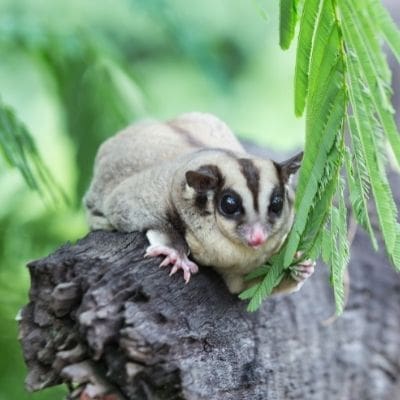
Sugar Glider
- A marsupial mammal
- 9-12 inches (24-30 cm) long
- Weigh 4-6 ounces (113-170 gm)
Fun Facts about Flying Squirrels
- A placental mammal
- Size – 9 to 11 inches (24-28 cm)
- Weight – 2 to 3 ounces (57 – 85 gm)
- Base jumpers and skydivers wear a wingsuit to enhance gliding distance and agility besides slowing a jumper’s descent. Researchers modeled and designed the wingsuit after a flying squirrel’s anatomy.
- Flying squirrels glow neon pink in the dark under ultraviolet light.
- They use their claw to extract the nutmeat instead of cracking the shell of the nut open.
Fun Facts about Sugar Gliders
- A marsupial mammal
- Size – 9 to 12 inches (24 to 30 cm)
- Weight – 4 to 6 ounces (113 to 170 gm)
- Did you know that a sugar glider, also called a sugar squirrel, is known for its love of sugar? They have a “sweet tooth” unmatched by any other animal.
- Gliders are always up for a sugary treat, like sap and nectar. Dental problems are common because of their sugary diet. Please have an annual exam with a veterinarian skilled in treating gliders.
- Their hands and feet have four fingers and an opposable thumb, which helps when gliding through the trees.
Final Thoughts – Are Flying Squirrels the Same as Sugar Gliders?
Flying squirrels and sugar gliders are incredibly different; then again, many similarities. Do you have a tip, an experience, or an interesting fact you would like to share with us? Please comment below or contact us, and we will respond!
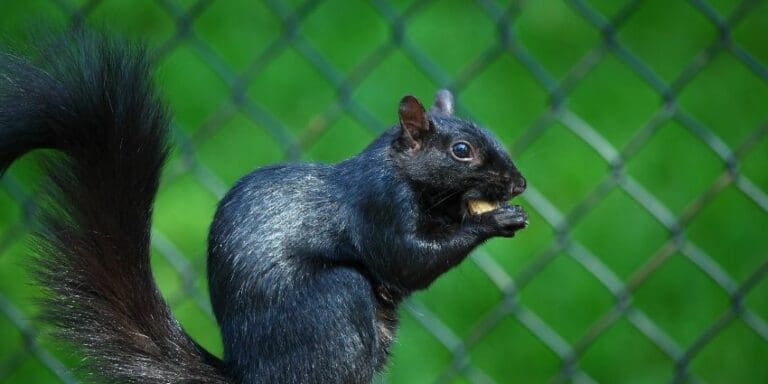

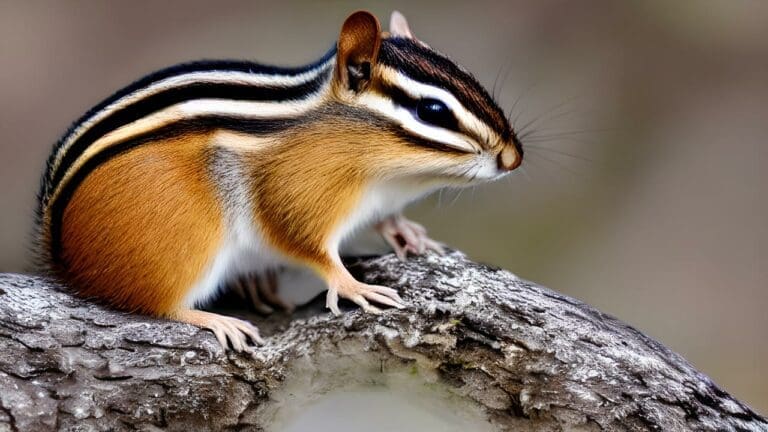

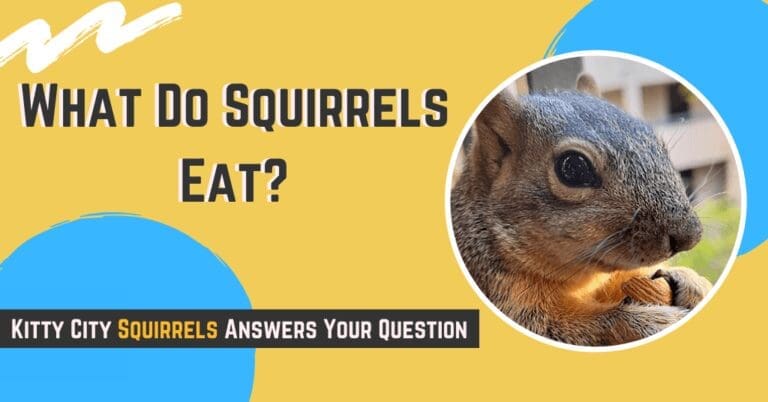

So a flying squirrel can gllde about 65 feet, about the length of a bowling alley. A sugar glider can’t soar as far…but it still manages to travel an impressive 164 feet…..???? Isn’t 164 feet more than 65 feet ???? Sooooo…what to believe ….caution ….not everything n the internet is written correctly.
Thank you Larry for bringing this inaccuracy to my attention. I have corrected the information and submitted it to Google and Bing for updating in their search engines.
Maddy
It says the sleep at night … but also says they are re nocturnal .. so that needs to be corrected. I think someone just made a mistake. The are active at night and sleep during the day is what they meant..
Hello Heather, Thank you very much for taking the time to comment and calling my attention to the misprint in the article. I corrected the information. Thank you for supporting the Kitty City Squirrels website.
Much appreciated,
Maddy
I don’t know about the length they glide but they are super happy to see me in the morning. They jump to that side of cage so they can come out and get their runs in. The hop all over the place. When they are warm and happy they make little humming clicky sounds. When I’m my shirt or eating treats. They love mini marshmallows but they don’t get those too often. Got my finger bit the other day over a pretzel and mozzarella. They really don’t leave each others side. I can’t imagine what one will do when the other goes. They are so bonded together. ♥️ Shani @hammy_thesquirrel.
P.s. loved your comparison. They are sleeping right now and it’s 12:17 am. They get up around 3 or 4 am and then I take them out of cage at 5. They will run around my room til about 9 am then lights out. Sometimes they are up during the day. Just depends. If it’s rainy out they are up. Great pets. Little more stinky then Hammy but I have grown to love their stink and it’s normal to wash the wall next to cage. They also eat. 50/50 blend of fruit and veggies with chicken or turkey, yogurt and applesauce. Can make a whole month worth at a time.
They have such personalities! Thanks for reading the article and letting me know what sweeties you have!
We love our sugar gliders but I can’t seem to make a believer out of my son-in-law! He keeps saying we have, flying squirrels! I know they are not! I need to share this article with our, son-in-law! How can I do that?
Thank you, Deborah, Sugar gliders are great pets. We want to make a believer out of your son-in-law! You can copy this address link below and send it to him! We appreciate your sharing our articles.
https://kittycitysquirrels.com/flying-squirrel-vs-sugar-glider/